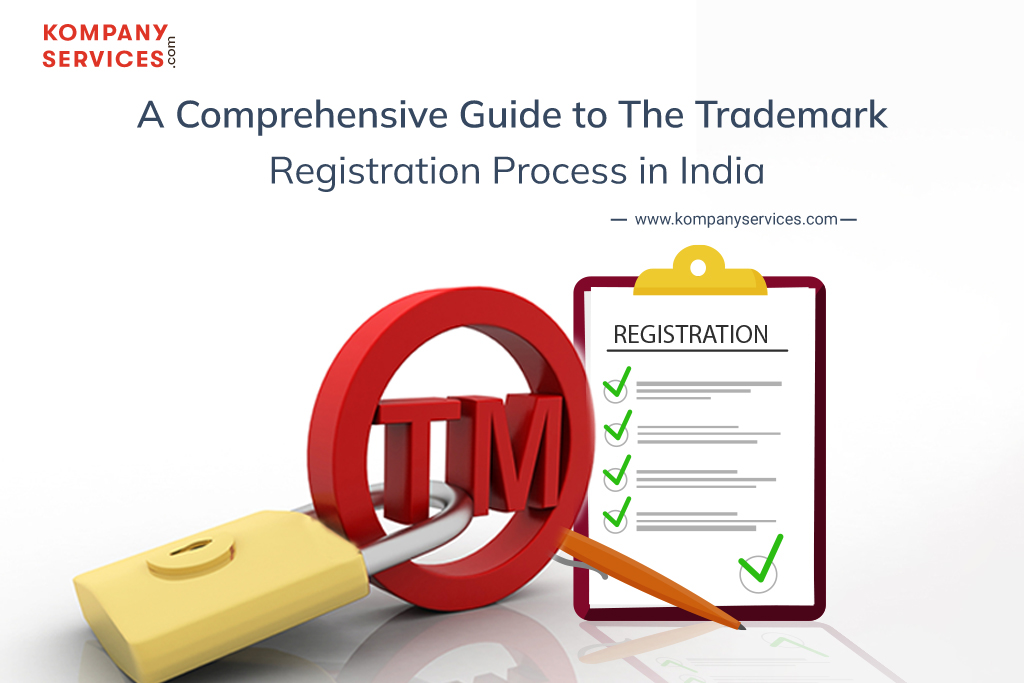A trademark is a special and distinguishing symbol that is used to identify products or services that are offered by a certain person, business, or entity. It can be expressed in many ways, such as through words, phrases, symbols, designs, logos, or a mix of these. In order to foster consumer loyalty and trust toward a brand, trademarks are essential for helping consumers identify and discern one brand from others in the marketplace.
It is significant to remember that service marks and trademarks are included under the same umbrella term. A service mark serves the same purpose as a trademark, however it is specifically used for services as opposed to physical commodities. A trademark identifies and protects items.
The following are a trademark’s main purposes and attributes:
- Finding the Source: Finding the origin or source of goods or services is the main function of a trademark. Customers recognize and identify a trademark with a specific business or service when they see it, which contributes to the establishment of the brand’s reputation.
- Legal Protection: The owner of a trademark acquires exclusive rights and legal protection upon registration. By giving the owner the ability to sue anyone attempting to use the same or a similar mark, confusion in the marketplace is avoided.
- Protecting Against Fraud and Counterfeiting: The unauthorized use of a trademark by third parties, as well as counterfeiting, are discouraged by registration. It guarantees that clients receive authentic, high-quality goods and services and contributes to the preservation of the brand’s identity.
Why to apply for a Trademark?
Registering a trademark in India offers a powerful arsenal of benefits that can safeguard your brand and fuel its growth.
Registering a trademark in India offers several significant advantages:
- Exclusive Rights: A registered trademark grants you the sole legal right to use it for the specified products or services. This establishes ownership and simplifies defending against infringement.
- Legal Protection: Registered trademarks are shielded from unauthorized use and infringement, allowing legal action against violators.
- Brand Awareness and Goodwill: A registered trademark fosters consumer trust and brand recognition, contributing to a company’s reputation and goodwill.
- Licensing and Monetization: Registered trademarks open doors for revenue generation and business growth through licensing or franchising rights.
- National and International Protection: A registered trademark provides protection across India. Additionally, it can serve as a foundation for securing protection in other countries under the Madrid Protocol.
Trademark categorisation in India
Trademarks serve as unique identifiers for goods and services in India and can take on diverse shapes. The many trademark categories that are accepted in India are as follows:
Word Circles
Without any artistic depiction, word marks are made up of letters, words, numbers, or combinations of these elements. It allows for freedom in font and style; Microsoft, Tata, KFC, and IBM are just a few well-known examples.
Marks of Devices
Labels, stickers, logos, and any geometric figure—with or without text elements—are examples of device markings. Colors may also be included in these marks, but in order to obtain protection, they must be indicated at registration. The recognizable Apple logo is one well-known example of a device mark.
Sound markings
Sound markings are unique noises that are used to uniquely identify the commercial source of goods or services. They have precise sound annotations and are represented in MP3 format. Yahoo, ICICI Bank, and Nokia are among the companies whose sound marks are registered in India.
Triple-Dimensional Brands
The shapes of the products or their packaging fall under this category; they must be unique from those of their rivals. The shape functions as a trademark in and of itself, allowing customers to identify the source of the product.
Trademarks in Color
When a buyer can easily recognize a product or brand thanks to its distinctiveness, color combinations can be registered as trademarks to represent goods and services.
Smell Marks
A distinct odor connected to a good or service is identifiable as a smell mark. Smell markings are uncommon but do occur in several industries, most notably in the fragrance and perfume industry.
Shape of Goods
Trademarks may be filed for products’ shapes provided they are unique and not only utilitarian. Shapes that add significant value to the items or are required for a technical outcome, however, cannot be registered as trademarks.
An Overview of the Trademark Registration Procedure
The legal procedure through which a company or individual obtains the only right to use a specific mark in connection with their products or services is known as trademark registration. It is an essential stage in creating and safeguarding brand identification, providing a barrier against future infringement and unauthorized usage by other businesses. Unregistered marks have common law rights, but registering your trademark gives you more protection and a strong legal base on which to build your brand identification.
Why is it necessary to register a trademark?
For companies of all sizes, registering a trademark is a smart choice because of the many advantages it provides. First of all, it establishes a presumption of ownership and validity in law by granting the applicant the sole right to use the mark in connection with their intended goods or services. This exclusivity offers a clear line of action for legal action in the event that unauthorized usage happens, serving as a significant deterrent against any infringers. Furthermore, a registered trademark gains value and can be sold, licensed, or used as collateral. Beyond its utility, trademark registration strengthens a brand’s legitimacy and inspires confidence in both investors and consumers.
A Comprehensive Guide to the Process of Registering Trademarks
Successfully completing the Trademark Registration process is necessary to forge a distinctive brand identity and safeguard intellectual property rights. Even if this path is complex, it is an essential step for companies hoping to maintain their uniqueness in the market. Every stage, from the first search for a distinctive mark to the ultimate issuance of the registration certificate, is essential to preserving exclusive rights and strengthening the legal position of the brand. To aid in your understanding, the steps involved in trademark registration are explained in full below.
Step 1: Classification of Trademarks
Businesses must classify their trademarks into pre-established NICE Classification System categories as part of the initial trademark registration process. There are 45 classes in the Nice Classification System, with classes 1 through 34 denoting products and the remaining classes denoting services. The classes for which trademarks are registered and classed correspond to the intended uses of the trademarks. To put it another way, trademark categorization establishes the boundaries of a trademark’s use and protection, providing a clear framework for the trademark registration procedure.
Step 2: Trademark Search
A thorough trademark search is another requirement to fulfill before beginning the trademark registration process. In order to find any marks that are similar to or identical to the proposed mark that would make its registration difficult, this phase entails analyzing databases both domestically and internationally. A comprehensive trademark search helps businesses make well-informed decisions regarding the distinctiveness and viability of their chosen mark, while also reducing the possibility of objections during examination.
Step 3: Filing a Trademark Application
The submission of the trademark application would be the following step in the trademark registration procedure if all requirements have been satisfied. The application is sent online to the appropriate intellectual property office, asking for the mark to be reviewed and approved. Important information is included, such as the applicant’s identity, a picture of the mark, and the particular category of products or services for which it is meant to be used. At this point, accuracy and completeness are crucial to ensuring a seamless progression through the entire trademark registration process.
Step 4: Payment of Trademark Fees
The process of registering a trademark requires payment of necessary fees when the application is filed. These fees pay for the expenses of handling the application, holding the test, and performing other administrative duties. The fee schedule that applies to them should be known by applicants, as it varies depending on the kind of entity and the number of classes in which their trademark is being registered.
Step 5: Examining Trademarks
In this phase, the intellectual property office carefully examines the proposed trademark to determine its availability and distinctiveness. Making sure the mark satisfies the requirements for uniqueness, non-descriptiveness, and compliance with other legal requirements is the main goal. The Examiner creates an examination report outlining any concerns that could impede the registration of a trademark.
Step 6: Addressing Concerns
In order to advance the trademark registration procedure, it is imperative that objections presented during the examination stage be addressed. Within 30 days of the objections being stated, the applicant must carefully address each one. The examiner will move on to the next phase if they are satisfied. If not, the examiner has the authority to call a show cause hearing to address the matter.
Step 7: Publication of Trademarks
The authorized trademark application advances to the publication stage following the resolution of the objections. The trademark is released in the trademark journal, an openly available publication that invites objections from possible third parties. Opposition from third parties may arise due to factors such as the mark’s resemblance to other marks. Before the application for trademark registration is eventually processed, these must be resolved.
Step 8: Resolving Third-Party Disagreement
When third parties voice oppositions or objections within the allotted time, resolving those issues becomes crucial to the trademark registration procedure. In order to address the issues expressed by opposing parties, this step may involve settlement talks, litigation, or negotiation. The application will not be considered for further action by the department until all public oppositions have been successfully resolved.
Step 9: Approved Trademark Certification
When the applicant receives a Trademark Certificate, the last stage of the trademark registration procedure is completed. This formal document provides him with concrete evidence of the exclusive rights granted to him. It is valid for ten years after the date of application once it is issued. The Trademark is safeguarded against unauthorized use and plagiarism for the duration of this period.
Step 10: Renewing Your Trademark
In order to preserve their rights, trademark owners must proactively renew their trademarks as the last stage of the trademark registration process. Its protection can be lost if it is not renewed before it expires. The procedure for renewing is nearly the same as the one for first registration. Furthermore, a trademark may be renewed an unlimited number of times.
Conclusion
In conclusion, trademark registration in India is a strategic investment that empowers you to safeguard your brand identity and unlock its full potential. By securing your trademark, you gain exclusive rights, legal protection, and a platform for brand growth through licensing or franchising. With a registered trademark, you build consumer trust, establish ownership, and pave the way for international expansion. If you’re looking to build a strong brand presence in India and beyond, consider taking the important step of registering your trademark today. Remember, numerous resources are available online and through government channels to guide you through the trademark registration process in India.




